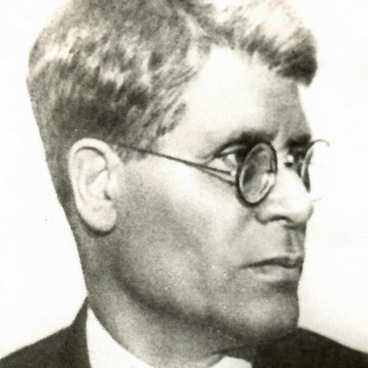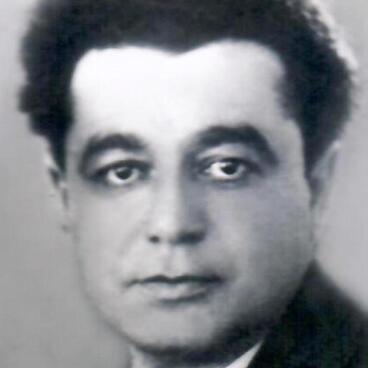In 1932, Bashneft sent Fyodor Pokhlebaev to Ishimbay oil fields to work as a rig mechanic. Later that year, he was transferred to work on organizing the oil refinement process. In late fall, in order to meet the oil field’s needs for petroleum products, he built the first gasoline extraction unit, which produced several buckets of gasoline per day. The following year, the rationalizer and innovator Pokhlebaev put two additional oil treatment facilities in operation, with one of them being built near Lake Karakul.
The veteran of the Ishimbay oil refinery F. A. Kulbaev recalls about the construction and maintenance of the second treatment facility: “The five-ton tank was lined with brick and covered with a coating. The coils were lowered into Lake Karakul. The nozzles were connected to the reservoir and the flare system was ignited. The distillation began. It was launched by uneducated workers with no technical training. Pokhlebaev wouldn”t leave the still for days, staying there to teach us, as we didn”t even know which way to turn the valve handwheel.”
Initially, the facility produced 750 liters of gasoline, but by the second half of 1933, its output reached up to 15 metric tons in a single day. Of course, having a low octane level and a high sulfur content, it could barely pass for gasoline. Pokhlebaev’s plant contained an oil still; treatment, water supply, and storage facilities; a boiler room; a laboratory; and even a repair shop. It produced two types of products: gasoline and fuel oil.
However, as soon as October 1934, the Chief Directorate of the Oil Industry commissioned the immediate construction of an additional gasoline extraction unit in Ishimbay. Designed by engineers Monakov and Smurov, the project of the new, large plant was approved in May 1935. The construction was headed by Ivan Novikov, who went on to serve as the plant’s director. Specialists, laborers, and trained workers came from all over the country to contribute to the construction. Equipment for the plant came from a large number of companies based in different parts of the Soviet Union: the treater vessel and heat transfer units were manufactured in the town of Podolsk near Moscow, boilers were provided by Kiev’s Lenkuznitsa factory, pumps came from the Krasny Molot factory in Grozny, motors were supplied by St. Petersburg’s Electrosila, and pipes were produced by the Taganrog and Dnepropetrovsk factories. The construction was completed in just a single year.
The newly launched plant reached its design capacity in October 1936, and, just a month later, a train carrying 18 tank cars of Ishimbay gasoline arrived in Moscow as a tribute to the 8th Congress of Soviets. In December that same year, the Ishimbay oil refinery (plant No. 433) was approved by the government commission. In 1939, the construction of a gasoline plant began on the left bank of the Belaya River, and on July 31, 1941, the Council of People’s Commissars made a decision to build a lampblack factory in Ishimbay. Furthermore, pyrolysis and sulfur factories, as well as the Neftegaz-8 plant were built here during the Great Patriotic War. During those years, all of these companies produced goods to help the war effort, including natural gasoline, gas sulfur, propane, and other products. Filmurgin, the substance used for refueling tank batteries, was produced exclusively in Ishimbay.
The veteran of the Ishimbay oil refinery F. A. Kulbaev recalls about the construction and maintenance of the second treatment facility: “The five-ton tank was lined with brick and covered with a coating. The coils were lowered into Lake Karakul. The nozzles were connected to the reservoir and the flare system was ignited. The distillation began. It was launched by uneducated workers with no technical training. Pokhlebaev wouldn”t leave the still for days, staying there to teach us, as we didn”t even know which way to turn the valve handwheel.”
Initially, the facility produced 750 liters of gasoline, but by the second half of 1933, its output reached up to 15 metric tons in a single day. Of course, having a low octane level and a high sulfur content, it could barely pass for gasoline. Pokhlebaev’s plant contained an oil still; treatment, water supply, and storage facilities; a boiler room; a laboratory; and even a repair shop. It produced two types of products: gasoline and fuel oil.
However, as soon as October 1934, the Chief Directorate of the Oil Industry commissioned the immediate construction of an additional gasoline extraction unit in Ishimbay. Designed by engineers Monakov and Smurov, the project of the new, large plant was approved in May 1935. The construction was headed by Ivan Novikov, who went on to serve as the plant’s director. Specialists, laborers, and trained workers came from all over the country to contribute to the construction. Equipment for the plant came from a large number of companies based in different parts of the Soviet Union: the treater vessel and heat transfer units were manufactured in the town of Podolsk near Moscow, boilers were provided by Kiev’s Lenkuznitsa factory, pumps came from the Krasny Molot factory in Grozny, motors were supplied by St. Petersburg’s Electrosila, and pipes were produced by the Taganrog and Dnepropetrovsk factories. The construction was completed in just a single year.
The newly launched plant reached its design capacity in October 1936, and, just a month later, a train carrying 18 tank cars of Ishimbay gasoline arrived in Moscow as a tribute to the 8th Congress of Soviets. In December that same year, the Ishimbay oil refinery (plant No. 433) was approved by the government commission. In 1939, the construction of a gasoline plant began on the left bank of the Belaya River, and on July 31, 1941, the Council of People’s Commissars made a decision to build a lampblack factory in Ishimbay. Furthermore, pyrolysis and sulfur factories, as well as the Neftegaz-8 plant were built here during the Great Patriotic War. During those years, all of these companies produced goods to help the war effort, including natural gasoline, gas sulfur, propane, and other products. Filmurgin, the substance used for refueling tank batteries, was produced exclusively in Ishimbay.



